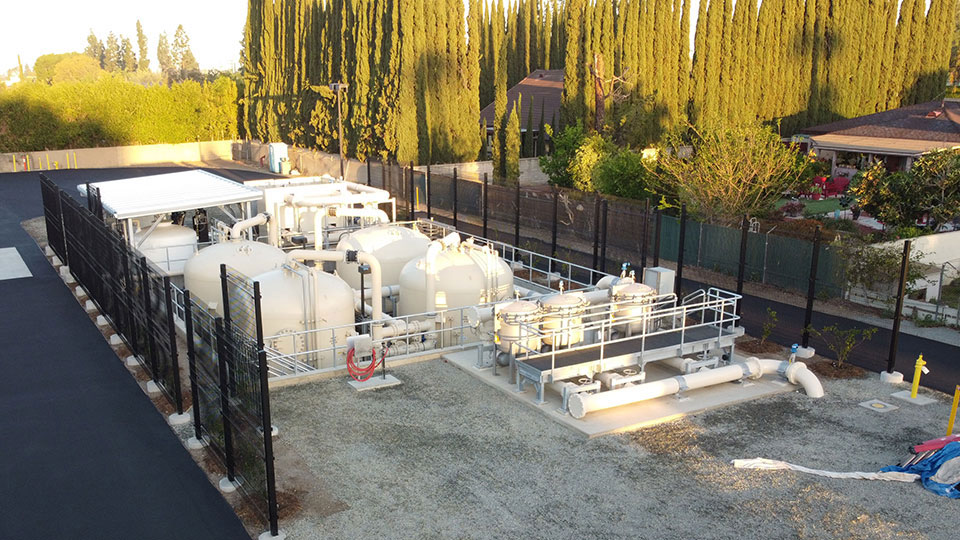Effective PFAS Waste Management in Industrial Environments
Advanced Methods for Effective PFAS Contamination Elimination
The persistent difficulty of PFAS contamination demands the exploration of sophisticated elimination approaches that can effectively address these dangerous substances. Ingenious innovations, such as innovative oxidation processes and various adsorption methods, have arised as appealing services in mitigating PFAS from influenced settings. Furthermore, the role of regulative frameworks fit these innovations can not be forgotten, as they dictate the pace and direction of remediation efforts. As we examine these innovative methods, it becomes essential to assess their functional applications and the more comprehensive ramifications for environmental health and policy.
Understanding PFAS Properties
Although per- and polyfluoroalkyl substances (PFAS) have been widely made use of in various commercial and customer items as a result of their unique homes, their perseverance in the atmosphere positions significant challenges to public health and wellness and safety. PFAS are a group of artificial chemicals defined by a carbon-fluorine bond, among the strongest chemical bonds known, which adds to their remarkable stability and resistance to destruction. This stability enables PFAS to collect in the setting and living organisms, causing prospective negative health effects.
These very same residential properties contribute to their environmental determination, as PFAS do not quickly damage down with all-natural processes. Recognizing the chemical residential properties of PFAS is essential for developing efficient methods to manage and minimize their ecological influence.
Ingenious Removal Technologies
The determination of PFAS in the environment has actually spurred the advancement of ingenious remediation innovations aimed at successfully removing these contaminants from influenced ecosystems. Amongst one of the most promising approaches are advanced oxidation processes (AOPs), which utilize effective oxidants to damage down PFAS substances into less harmful substances. AOPs can be customized to target details PFAS frameworks, improving their efficacy.
Another arising modern technology is making use of adsorption media, such as turned on carbon and ion exchange materials, which can selectively record PFAS from contaminated water. These products have actually revealed substantial removal efficiencies, although regular replacement and regrowth are required to keep efficiency.
Membrane layer filtration methods, consisting of reverse osmosis and nanofiltration, are likewise obtaining grip in PFAS remediation. These approaches can successfully separate PFAS from water, supplying a viable remedy for treating polluted resources. Additionally, thermal therapy methods, such as incineration, can break down PFAS right into non-toxic by-products, though they call for cautious monitoring to control emissions.
Collectively, these cutting-edge remediation innovations stand for significant innovations in the ongoing battle versus PFAS contamination, supplying various methods to recover affected atmospheres and shield public health.

Bioremediation Strategies
Bioremediation methods offer an encouraging method to addressing PFAS contamination by taking advantage of the all-natural capabilities of microbes to deteriorate these relentless compounds (m270 waste management). This approach includes making use of microorganisms, fungi, and various other microbes that can metabolize or transform PFAS materials into much less damaging results
Current improvements in molecular biology and environmental microbiology have boosted our understanding of microbial communities and their prospective roles in PFAS deterioration. Researchers are actively discovering specific stress of microorganisms, such as Pseudomonas and Bacillus, which have demonstrated the capacity to damage down particular PFAS compounds.
Sitting bioremediation strategies, where microorganisms are promoted straight in infected environments, can be especially efficient. This approach frequently entails the application of nutrients or electron benefactors to advertise microbial growth and activity. Furthermore, ex lover situ approaches, such as bioreactors, enable controlled conditions that can enhance destruction prices.
Despite the promise of bioremediation, difficulties continue to be, consisting of the complicated nature of PFAS substances and the demand for comprehensive field testing - m270 waste management. Continued research study and growth will be critical to improve these techniques and evaluate their effectiveness in diverse environmental contexts
Adsorption and Filtration Methods
Dealing with PFAS contamination typically includes utilizing adsorption and filtering techniques, which are created to eliminate these consistent chemicals from water and soil. find more Among the numerous methods, triggered carbon adsorption is commonly utilized due to its high surface and porosity, enabling effective capturing of PFAS particles. Granular triggered carbon (GAC) systems are particularly preferred for dealing with big volumes of contaminated water, while powdered activated carbon (PAC) can be made use of for smaller-scale applications.
Ion exchange resins also reveal pledge in PFAS removal, functioning by trading PFAS ions with much less damaging ions in the water. This method has actually shown efficiency in concentrating PFAS substances, facilitating their succeeding elimination. Additionally, membrane layer filtering techniques, such as reverse osmosis and nanofiltration, operate by utilizing semi-permeable membrane layers to different PFAS from water, effectively reducing their concentrations.
While these techniques work, they must be meticulously picked based upon the specific PFAS substances existing and the ecological context. Continual improvements in materials science and engineering are leading to the growth of novel adsorbents and filtration systems that boost elimination effectiveness and lower functional expenses, thereby boosting overall removal efforts.
Regulatory and Policy Factors To Consider
Exactly how can reliable regulatory structures boost the administration of PFAS contamination? Thorough policies are vital to make certain a coordinated and robust response to the challenges postured by per- and polyfluoroalkyl materials (PFAS) Laws can establish clear guidelines for surveillance, reporting, and remediating PFAS-contaminated sites, promoting liability amongst industries and public entities. (m270 waste management)

In addition, monetary motivations and grants can be integrated into plans to urge the adoption of advanced remediation modern technologies. Policymakers must also prioritize research study and growth, ensuring that emerging techniques for PFAS removal are verified and applied effectively.
Furthermore, public understanding and involvement are critical components of any regulative technique, equipping areas to support for their health and wellness. Inevitably, a well-structured governing setting will certainly not just boost the monitoring of PFAS contamination yet additionally advertise sustainable practices that protect future generations.
Conclusion
In recap, the complexity of PFAS contamination demands the fostering of advanced removal techniques. Proceeded research and growth in this field remain important here are the findings to dealing with the obstacles presented by PFAS contamination.